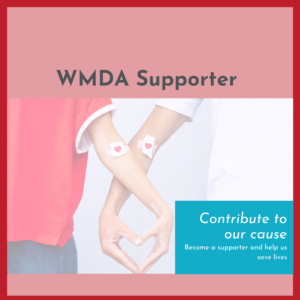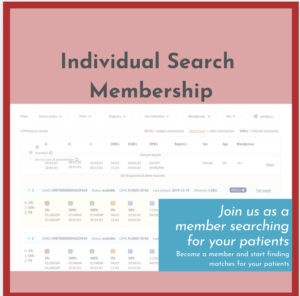Start listing donors/cord blood units internationally
Establishing a Stem Cell Registry or Public Cord Blood Bank
Setting up a stem cell donor registry or a public cord blood bank is a complex but deeply impactful endeavor that can save countless lives. WMDA is here to support you at every stage of this journey — from planning and development to full operational integration within the global transplant community.
A stem cell donor registry plays a dual and vital role in the field of hematopoietic stem cell (HSC) transplantation:
-
Patient-focused responsibilities: The registry supports transplant centers by coordinating the search for suitable unrelated donors — whether adult volunteer donors or cord blood units — to help patients in need of a life-saving transplant.
-
Donor-focused responsibilities: The registry recruits, educates, and manages volunteer stem cell donors. It ensures that donors are well-informed, available, and supported throughout the process. When a donor is selected for a patient, the registry organizes all necessary medical evaluations and collection logistics (known as the “work-up” process) to safely deliver the stem cell product.
In the international WMDA network, registries may act as:
-
Patient or Requesting Registries: Acting on behalf of transplant centers to identify matching donors or cord blood units worldwide.
-
Donor or Providing Registries: Supplying hematopoietic stem cell products from their donors or cord blood banks to patients in need.
By joining the WMDA community, new registries and cord blood banks gain access to global expertise, standards, and collaboration opportunities — ensuring high-quality, ethical, and effective support for both donors and patients.
Step 1: Getting Started
WMDA provides a step-by-step handbook with complete instructions for setting up a registry or cord blood bank. The handbook covers every process needed to become operational. Access is available by applying for Individual Membership. Become a WMDA Member.
Before listing donors or cord blood units in the WMDA Database, you must complete a checklist to ensure all key information is in place. Download the checklist here.
With over 44 million donors worldwide, unique identification is critical. WMDA has developed the Global Registration Identifier for Donors (GRID) to ensure secure, reliable, and unambiguous donor assignments. Read more about GRID in the pull down menu below.
Step 2: Understanding GRID
GRID is designed to:
-
Reduce misidentification of donors with globally unique identifiers
-
Provide a standardized, human-readable donor ID
-
Support machine-readable formats for systems integration
-
Include a checksum for transcription accuracy
-
Ensure consistent documentation
-
Improve traceability of donors
GRID is built on established standards like ISBT-128 and Single European Code (SEC) and is maintained in partnership with the International Council for Commonality in Blood Bank Automation (ICCBBA).
Quick links:
What is GRID?
- Publication explaining GRID: Global Registration Identifier for Donors (GRID) of Hematopoietic Stem Cells: Road to Automation and Safety
Technical documentation about GRID:
Operational tools:
- List of Issuing Organisation Numbers (ION)
- GRID Calculator provided by WMDA (recommended)
- GRID Calculator provided by ICCBBA
- Template: Global Registration Identifier for Donors (GRID) – implementation plan
Step 3: Next Steps to Listing Donors or Cord Blood Units
-
Complete the Checklist: Fill out all required operational and technical information.
-
Submit to WMDA: Email your completed checklist to WMDA. WMDA will review and guide you on next steps.
-
Promote Your Registry: Once your criteria are submitted, sign the data use agreement, send a test file, and upload operational information to WMDA. Inform the WMDA office when you’re ready to start listing.
-
Apply for Sector Listing Membership: Send your formal application to the WMDA via email (mail@wmda.info). Upon approval, your donors or cord blood units will be visible in the WMDA Search & Match Service.
-
Annual Membership: After approval, your organization will receive an annual invoice from WMDA.
Step 4: Get Involved and Learn More
WMDA supports your growth with opportunities to:
-
Publish operational and regulatory information on WMDA Share
-
Write an article for Stem Cell Matters to introduce your registry
-
Attend WMDA meetings and present your registry
-
Take online educational courses. Show me the courses
- Participate in committees and projects to help shape the future of international collaboration between registries, cord blood banks and transplant centers


